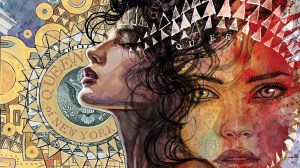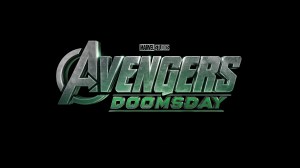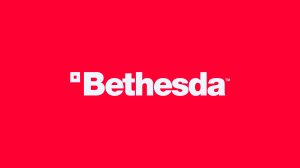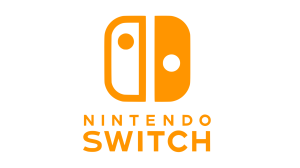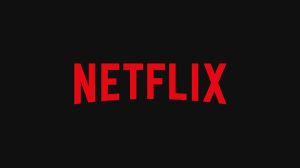With the world taking time out of their day (and about a half a billion dollars out of the economy) to acknowledge a once-in-a-generation solar eclipse, it seemed like a fun time to re-read The Final Night, DC Comics’s 1996 event series in which the sun was extinguished and heroes had to figure out how ot get it going again.
Videos by ComicBook.com
In the story, a cosmic being known as the “Sun Eater” arrived to devour Earth’s sun, and the heroes of the DC Universe had to first attempt to stop it — and later attempt to reverse its effects once it was attached to the sun and feeding.
“The Final Night came out of brainstorming possible Superman stories for an upcoming Summit with Stuart Immonen,” writer Kesel told ComicBook.com. “Stuart said ‘Superman’s powers come from the sun— what if the sun went out?’ And I said ‘If the sun went out, Superman wouldn’t be the only one with problems!’ And a mini-series event was born!”
Immonen and Jose Marzan, Jr. would draw the series, with colors from Tricia Mulvihill and letters from Gaspar. The series served as a month-long event for DC, with its four issues released weekly, and also as a springboard for the “Electric Superman” era, in which Kesel and Immonen would be major players.
Today seemed like the perfect time to take a look back at The Final Night and do a bit of a “retro review” on one of DC’s more overlooked event series.
A caveat: We are not looking at tie-in books (of which there were many, and in typical ’90s fashion, there were some good ones and a lot of not-so-good ones), or at the Parallax: Emerald Knight one-shot.
Parallax in particular feels like it should be a part of this conversation, but for brevity we are looking at the four issues of the actual The Final Night miniseries, from Kesel and Immonen (Emerald Knight came from Ron Marz and Mike McKone — and it also telegraphs the ending of The Final Night something fierce, so there’s an argument to be made the The Final Night is better read without it, with the Parallax one-shot being required reading mostly for people whose interest in the story comes entirely or primarily from Green Lantern.
The Final Night #1
The Final Night opens like a late ’90s action movie — perhaps not surprising, considering that we had a slew of those dealing with massive natural disasters and the like and The Final Night sort of feels like a response to Armageddon and Deep Impact and the like.
There is also an immediate immersion in the world of the story, if you are reading as a casual DC fan or, as you would be doing now, reading a “different version” of the DC Universe. The DCU of the mid-’90s did not politicize superheroes as much as the current one does, and typically stories involving government agencies were less bureaucratic and militarized, but the world was lived-in, and that means the government and private organizations knew how to deal with something like a rogue spacecraft blasting toward the planet. In the span of a page, Kesel manages to tell the audience basically how government and superheroics work together in the DCU.
What we get from the introduction, too, is that it is a Superman story. The Man of Steel is not only front-and-center when Dusk arrives on Earth in the opening sequence, but his presence is announced with a narrative box that has onlookers remarking of the spacecraft above “Look! Up in the sky!”
Superman is a character that both Kesel and artist Stuart Immonen were working on at the time, and the story (as mentioned previously) spun out of that.
Also present is Karl Kesel’s well-documented love of DC’s Silver Age, with the whole concept of The Final Night being borrowed from a Legion of Super-Heroes plot. More on that as the story unfolds, but in service of that idea, the Legion is trapped in the then-present day, a thousand years in their own past.
Something that’s worth noting: originally, comic shops were provided with a Final Night primer — a short story that was distributed for free and featured a recolored version of the The Final Night #3 cover. It covers Dusk’s backstory, and it’s heavy on the exposition. The story ties her to one of Earth’s superheroes — Starfire — and so provides a tie to her for the readers, but ultimately it serves little purpose and the story is better served jumping right into the action at the start of #1.
If you want to read the introductory short, though, it is included at the start of the Final Night collected edition as well as attached to the start of The Final Night #1 if you buy it digitally from ComiXology.
In the first issue, readers are introduced to some digital effects and coloring tricks that will be used throughout the series. At the time, a lot of colorists were struggling to deal with the encroachment of digital techniques on what was traditionally an analog art — and Glen Whitmore, who provided the colors on the Superman books of the time, was someone who has, by his own admission, remained somewhat more firmly rooted in the old ways. Tricia Mulvihill came in for The Final Night and throughout — but especially in the firs and last issues — became one of the first colorists to really knock it out of the park using digital techniques without going overboard.

The Final Night #2
The series’ second issue is as pedal-to-the-metal as its first; after a brief summary of #1 from newscaster Jimmy Olsen (in case any new readers might be trickling in for the second issue), the issue cuts to Oracle’s watchtower, where she is monitoring the whole of Earth.
The job has her harried and haggard, barely able to keep track of who she’s talking to, but it was a big gesture of faith in her from Batman, and the scene itself helps to underscore the interconnectedness of DC in the ’90s, with her monitors being covered in images from The Final Night tie-in comics. It also underscores Barbara Gordon’s strength and versatility during that period of time when Batgirl was not a brand to be exploited but avoided.
There is a bit of transition wonkiness, as going from Jimmy’s newscast to the events he’s covering and then zooming out from those events to see Barbara’s computer monitors has the feel of a hall of mirrors, a little bit, but it’s easy enough to follow if not the perfect narrative choice. And that splash page of Superman and Luthor shaking hands was just gorgeous. One of a handful of images in this book that would make a solid pin-up if it weren’t 20+ years old.
Immonen has some really great layouts and some relaly cool body language going on in this issue, although Jose Marzan, a great inker at this period in his career, was not at his strongest when working with Immonen. The result is that there are some scenes where the art is muddy. The coloring doesn’t help those scenes, since without the sun, Mulvihill seemingly decided to do a lot of monochromatic scenes. It helps to really make some of the brightly-costumed (or light-powered) characters pop off the page, but in crowds of regular folks, some of whom have faces inked too heavily and too broadly, it isn’t helping.
There is an interesting creative choice in this series to have people of various different nationalities appear and speak their actual languages, untranslated. In the first issue there was a French character, who basically just asked whether the “two suns” — one of them was a decoy created in an attempt to distract the Sun Eater — were a trick to destroy France’s way of life. In #2, it’s a Spanish-speaking woman being rescued by The Ray.
That leads to one of the series’ nicer moments, a look at how some superheroes react to the desperation of seemingly-certain doom by continuing to make whatever life remains better for those around them.
In some ways, characterization is where The Final Night #2 really excels. Nobody is out of character, some particularly fun combinations like Lex Luthor and Brainiac 5 bring unexpected fun to the proceedings, and there is a certain sense of looming dread that has not yet taken over the book, but certainly threatens to. As that plays out, we get to see what people are really made of and where their priorities are.
If there is a weak spot on the characterization front it’s that Superman — who was such a big part of the conception of the story and of the miniseries’ first issue — appears only in a glorified cameo here. That can be jarring when reading all at once, but frankly the other side of that argument is that Lex Luthor — Superman’s opposite number — comes in to fill the void a bit.
Also, yes: we did notice that the same day Geoff Johns released the “The End is Here” cover for Doomsday Clock #1, there was a solar eclipse. COINCIDENCE?!

The Final Night #3
First of all, let’s talk about this cover: while we have not yet heaped praise on the covers for the first to issues, which were great and moody images, the cover to #3 is…really disturbing.
Yes, those are body bags on the ground beneatn Superman, Wonder Woman, Green Lantern, and Captain Marvel.
…Okay. That’s…a choice…for the cover of your big summer blockbuster comic.
Anyway, moving on.
This is the issue where things start to fray around the edges for our heroes, who are losing hope, and losing energy, and just…losing. Things are looking worse and worse, and while some heroes are taking it more or less in stride (Superman and Wonder Woman have to be an example, after all), others — especially Guy Gardner — are less so.
Guy’s bar is used as the setting for the first chunk of the issue and the hot-headed former Green Lantern shows off just how badly he’s starting to lose it in the first couple of pages.
The issue also features a nice little nod to another beloved DC crossover, with its Invasion!-inspired headline: “Earth to Demon: Go to Hell!” after Etrigan attempts to play on the people’s desperation.
The pace slows down a bit here, but the stakes continue to rise. The result is that while it is not as bombastic as the first two issues, it does not feel like it slowed down particularly. The fact that the story is jumping from failure to failure and desperate situation to desperate situation helps set the tone.
And, yes, it is during this issue that, among all the desperation, the Kirby-inspired Kesel can’t bear to let everything seem dire. Dusk, our abused and desperate alien visitor, gets an Ebenezer Scrooge-like tour of the best parts of the human spirit.
Things get incredibly bleak in the closing moments, building to a tie-in comic for Hal Jordan, the only one with the power necessary to rekindle the sun. Guy Gardner’s attempts to drink away his sorrow feel more raw and less cartoonish in the main series than they did in the tie-in, although that is not really the fault of Ron Marz’s writing; it’s just that Emerald Knight enters Guy’s story at the moment The Final Night leaves it off.

The Final Night #4
If there is a weak link to the Final Night story arc it is arguably the conclusion, which spends a lot of time waiting for Hal Jordan to show up and deliver a last-minute reprieve that DC has painstakingly telegraped to the point where it would be basically impossible to mistake what was happening.
At least “The Death of Superman” printed it right on the cover, and dropped the pretense.
Anyway, there are some truly great character moments. When Kyle Rayner is whisked away and Superman offers himself up as a sacrifice to save the world, the story beat where he stopped to write Lois a good-bye note is beautifully done.
Similarly, Ferro’s decision to take Superman’s place and do right by the world is a great beat, although the end result is that you get something that mirrors that weird transition wonkiness from #2: Superman decides to sacrifice himself, prepares to leave, gets there to find out Ferro decided to sacrifice himself; he leaves, and is stopped by Hal, who has decided to sacrifice himself.
Still, despite that bit of storytelling whiplash, it mostly works — even if a couple of pages in this issue was expanded to dominate Batman’s character for about five years of dealing with Hal Jordan, resulting in some unfortunate storytelling choices down the line.
The issue builds to Hal’s sacrifice, and then there is quite a bit of falling action/denouement after the death itself. It is somewhat surprising that in a series that lasted only four issues and where the pace seemed so breakneck at first, so much time in the finale is spent in quiet contemplation…but at least that provides some much-needed closure on some of the story points, an indication as to where Superman is headed, and the whole thing doesn’t just end on Hal’s big moment and then a page or two of recovery, a la Zero Hour or other ’90s event comics.

Final Night’s Final Sacrifice
It is difficult to talk about The Final Night without talking about its final sacrifice.
The fourth issue of The Final Night is the final big action sequence in Armageddon: somebody is going to save the world, and that person is going to pay for it with their life, and the audience just doesn’t know who.
Except, of course, that almost everyone reading The Final Night knew.
Hal Jordan, formerly (and now currently) the Green Lantern, had gone insane and killed a bunch of people after some Superman villains blew up his hometown. The character was the villain in Zero Hour: A Crisis in Time and a few other stories before being redeemed in The Final Night, sacrificing himself to save the world (and, on a smaller level, Ferro).
The pacing of the finale is a fairly successful misdirect; as a teenager, I recall reading the finale and believing for a moment that Ferro might really sacrifice himself and change what we all believed we knew to be the end of the story.
Still, there were a few things that stuck out:
- Back in the late ’90s, rumbling around the Wizard magazine office held that The Final Night was originally meant to be titled Blackest Night, but was altered late in the game because it telegraphed the ending so clearly. ComicBook.com reached out to a couple of sources who were with DC in the ’90s, and in both cases got some variation on “I don’t remember that, but it sounds about right.” A third source said this was unlikely to be true.
- In The Final Night #2, Kyle Rayner’s research mission to the sun is interrupted when he suddenly vanishes without a trace. The thread is picked up in Parallax: Emerald Knight, a one-shot that took place between The Final Night #2 and #4. As that was the only tie-in one-shot released for The Final Night, most readers correctly assumed Parallax/Hal must be playing a major role in the story.
- Also in The Final Night #2, Kyle’s research mission takes place on a page opposite a full-page ad for Green Lantern #81, in which Hal Jordan’s funeral took place. While it does not expliticly say who died, the heroes of the DC Universe are all holding green flame in remembrance, with Kyle Rayner at the fore. That the funeral was taking place in Green Lantern, as opposed to one of the Superman comics for instance, suggested early on that the death would be a major Green Lantern character. The ad trumpets “And don’t miss: The Green Lantern Gallery! The history of Hal Jordan told in punups by the brighest talents in the comic book industry.”

The Final Night, Reviewed
The Final Night is an odd animal among Big Two event comics. It is a small story that has global implications, but no giant, all-powerful bad guy to fight. Or at least, it does, but that bad guy is not sentient.
It is a smart, sharp, character-driven piece that sees artist Stuart Immonen start to really come into his own, setting the stage for an amazing career that’s still going strong more than 20 years later.
If there is a misstep, frankly, it is that the final issue seems to have been taken over by editorial in order to put Hal Jordan where they wanted/needed him to be. The pacing of The Final Night is like the movie Crank — you begin in media res, and everything just keeps happening so fast that it successfully ratchets up the stakes and the energy through the first three issues. The finale has its moments, but ultimately feels like somebody slammed on the brakes.
While Hal’s sacrifice is noble, well-written, and gorgeously illustrated, it still feels a little bit like the engine dropped out of the car, and the drivers were forced to pick it up and run it over the finish line.
Something that was omitted above: there is something delightful about reading the S.T.A.R.com columns that appear on the final printed page of each issue of The Final Night. They do not appear in the collected edition for the miniseries, nor are they visible in the digital copies.
If you haven’t got the single issues, what we’re talking about is what would now be called viral marketing (probably?). DC took their one-page “what else is happening in DC Comics this week?” kind of house ad and gave it space as a mock-up of a mid-’90s website for S.T.A.R. Labs, purportedly helping the public deal with disaster preparation and the like.
The joke/fake website took a very ground-level approach to a world-spanning event, and that is where The Final Night tends to do the best. Character beats, social observations, and the like shine here.
The question of what superheroes would do when faced with the end of the world is one that has been explored numerous times, both before and after The Final Night. Compared to most of these stories, though, The Final Night is inspired writing. It is easy to go dark and cynical in a story like that, to emulate a Watchmen-like universe where no future means no consequences, so the superheroes lose focus, but that does not happen here.
Or rather, it does, but it is not the dominant narrative. Characters like Guy Gardner, trying to drink away his depression in spite of his body’s rejecting the booze, are the exception, not the rule, and what’s far more common is somebody like The Ray, burning himself out to provide light and heat for an impoverished village and then finding himself nursed back to health by the villagers, reaffirming not only his own best instincts but those of humanity at large.
Another final note: the covers. Immonen creates a quartet of striking, beautiful images for the covers, and any of them could have been a pin-up, and we are still waiting for one to be an inspiration for a movie poster.



